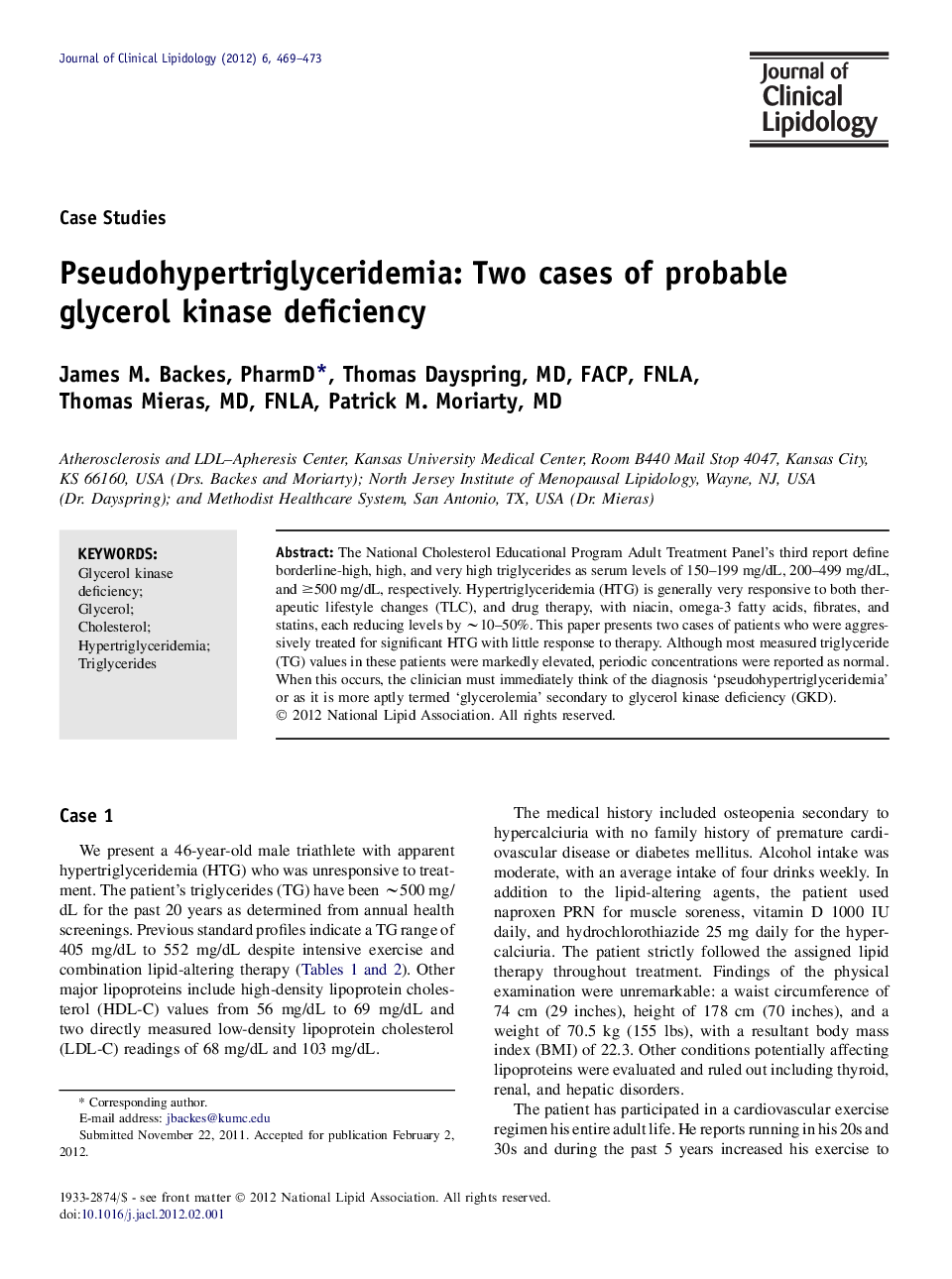| Article ID | Journal | Published Year | Pages | File Type |
|---|---|---|---|---|
| 2966579 | Journal of Clinical Lipidology | 2012 | 5 Pages |
The National Cholesterol Educational Program Adult Treatment Panel's third report define borderline-high, high, and very high triglycerides as serum levels of 150–199 mg/dL, 200–499 mg/dL, and ≥500 mg/dL, respectively. Hypertriglyceridemia (HTG) is generally very responsive to both therapeutic lifestyle changes (TLC), and drug therapy, with niacin, omega-3 fatty acids, fibrates, and statins, each reducing levels by ∼10–50%. This paper presents two cases of patients who were aggressively treated for significant HTG with little response to therapy. Although most measured triglyceride (TG) values in these patients were markedly elevated, periodic concentrations were reported as normal. When this occurs, the clinician must immediately think of the diagnosis ‘pseudohypertriglyceridemia’ or as it is more aptly termed ‘glycerolemia’ secondary to glycerol kinase deficiency (GKD).
